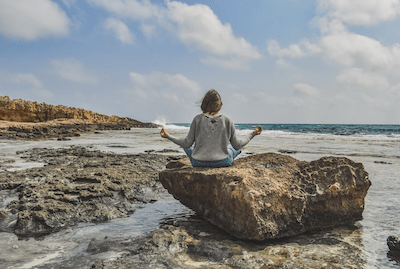
Concentrative, Contemplative, Meditation, Mindfulness, Spirit, Women & Gender
The full answer may be longer than you wanted.
There are at least four different basic answers—and then there’s all the rest of it.
One basic answer is, “Whatever position gives you the best signal that your mind has gone away from awareness-in-the-moment into either drifty mind or washing-machine mind,
A second is, “a classical cross-legged or chair position with a mudra of your choice.”
A third is, “Any position that you can physically manage and maintain for some time.”
A fourth is, “Any position in which you’re willing to meditate, in contrast to other supposedly correct positions that cause you to avoid meditating when you think about them.
Any one of these answers might be best for you. You can judge that for yourself after reading about each.
The first answer contains the key insight that the mental effort required to stay aware of your posture in the present instant is itself a powerful aid to maintaining a focused meditative state. Sitting straight upright on either a cushion or chair, with your eyes focused slightly downward anywhere from about six feet ahead to the far horizon, and your hands forming a perfect (i.e. non-drooping) mudra is best of all if you can manage it. (Yes, that’s the second answer above.) Why? Because your mind will inevitably have a tendency to drift here or there, and if you’re sitting in such a position with the intention to maintain it, then as soon as you notice that you’re slumping just a bit, or that in your Zen mudra your thumbs are pointing downward rather than forming an egg than a round ball, or that your jnana mudra is similarly droopy, you can straighten up your back, reform your mudra, breathe deeply, and continue your classical meditative posture. Maintaining it requires mindful attention to keeping some of your mind in the present.
If, of course, you’re doing an extended meditation—especially in a group—in which you’re supposed to remain motionless, after a time your body will be experiencing physical pain just from maintaining the fixed position and you will have no alternative but to be aware of your physical position and sensations. When you see a picture of a group of people meditating, all sitting in the very same or almost the very same posture, that’s probably what’s happening. There’s a special kind of psycho-somatic learning that’s occurring just by maintaining that position. (In many meditation groups, after such a period of sitting there’s a period of walking meditation that gives your body a chance to move.
With the second answer above, a full-lotus meditation is favored by some practitioners. That’s a cross-legged position with each leg crossed above the other and the soles facing upward. (See the link below.) Some yogis maintain the ability to sit full-lotus, or in even more demanding and in some cases amazing positions, into old age. Those who do usually sit (or in some cases stand) in such positions every day. When I was in my twenties and thirties I used to sit full lotus. Toward the end of my thirties a doctor told me, “There seems to be some evidence that full lotus is bad for your ankles, at least for some people.) After that I moved to a half-lotus position in which the legs are crossed only one is pulled up through the other. Less demanding yet is a simple cross-legged position. Your body will probably tell you which cross-legged position can work for you.
In any position on the floor or ground it helps to raise your butt about four inches off the floor so that there’s a downward tilt from your butt to your knees. Every meditation center has cushions that do this. It’s best to sit on the forward edge of the cushion rather than in the middle of it. The downward slope makes it much easier to keep your spine straight and sit up straight. And it’s more comfortable than sitting flat on the floor or ground. Most pillows doubled once will do nicely as a substitute for a meditation cushion—but if you want the real thing you can find them in shops that have meditation accessories and online. When i’ve had neither cushion nor pillow, I’ve found that turning one clean sandal or shoe upside down, placing it on top of the other, and using the two as a cushion usually does the job. Outdoors you might find a small slope or bump somewhere nearby that’s about the right size to raise your butt enough for comfortable sitting and a straight spine,
There is also kneeling meditation, kneeling with your legs together and back straight up. Many people who favor that position find that a cushion or pillow (or even a folded jacket or sweater) between butt and legs is useful.
In meditation halls I sometimes noticed some of people sitting up straight in chairs rather than on the ground or a cushion in a cross-legged position. In most places there were a few chairs somewhere in the room, mostly occupied by elderly meditators. An older friend and I sometimes led workshops together and he always sat in a chair. “My knees just won’t go into a cross-legged position,” he said. Now I’m older myself, with arthritis in my joints. At some point I moved from usually sitting cross-legged to preferring the chair. Still with a straight spine, looking slightly downward, keeping my mudra in its proper position, but my legs said “Thank you for not making us sit cross-legged on the ground any more.” My chair position is sometimes with my legs straight down and sometimes with them cross-legged beneath me on the chair.
All that involves sitting. Some years ago when I was doing a weekly class I asked the students to keep a meditation journal. To write down just a few sentences about what happened during their meditation period each day. One young woman consistently wrote that she just didn’t feel called to sit up during her meditation but preferred to lie down. She did, however, keep one of the most detailed and best journals of her meditation experience, and said it was almost always valuable in helping her feel better. As you probably know, lying down tends to predispose people more toward a hypnogogic, dreamlike state and less toward a mindful, moment-by-moment awareness state. Her meditations were a kind of combination of both. And very interesting, especially in their contemplative excursions. That was what worked for her. It was a clear case of meditating in her own way or not at all. So that becomes my final statement. Lying down meditation is not a position I suggest, but better than none. There are, after all, statues of reclining Buddhas scattered all over Southeast Asia. And it just might be what you need at a given moment. Assess your needs and learn to trust yourself.
If you want to meditate standing up, such as while waiting for a bus, I recommend a moving meditation rather than standing motionless. An online search for <standing moving meditations> will bring up a number of YouTube videos of such movement patterns. The ultimate expression of this is Tai Chi.
When properly performed, hatha yoga is also a meditation. Attention to your breathing in a meditative manner while performing your asanas, and to fully experiencing the sensations of your body as you move and the rest of your field of awareness make your yoga session into a transformation in consciousness that’s quite different than it is if you go through the motions with an athletic mindset. This can be structured pranayama or simply bare attention as described just above,
For photos of eight sitting meditation positions see Melissa Eisler’s <https://mindfulminutes.com/how-to-sit-for-meditation/>.

Cultures, Politics, Spirit, Uncategorized
STABBING DEMOCRACY TO DEATH
In an authoritarian nation like Russia a question is how close to totalitarianism, as under Stalin and under Hitler’s Germany, the authorities will go. Putin has taken steps to make it more so with his ever-greater censorship and moves to control everything in the media that does not follow his party line.
The United States has long paid at least lip service to democracy and viewed itself as a defender of “freedom.” Rather limited freedom for many of the people. It’s obvious in the patently antidemocratic “electoral college” for Presidential elections, with the result that two of the four presidents “elected” since the turn of the millennium had millions of votes fewer than their opponents. One political party has steadfastly and successfully opposed all attempts to eliminate the electoral college.
But in the years 2021 and 2022 the project of defeating democracy has taken a great leap forward. One political party U.S. is intentionally, systematically and methodically moving forward with a project to eliminate democracy and take authoritarian power for itself. This was visible to the entire world when the January 6 rioting mob stormed the Capital and tried to put the loser of even the electoral college vote into power.
That was just the visible tip of the iceberg. The greater damage, which may ultimately result in turning the U.S. into a fully authoritarian state with nothing but a fig-leaf of deceptive words that imply that it is a so-called democracy is the Republican project to 1) throw as many people as possible who look like they won’t vote Republican off the voter registration rolls, and 2) create electoral districts that assure them of victory at every level from state legislatures to the presidency regardless of what most voters want. While many people who are not Republicans realize this is happening, few have recognized it as the powerful threat to democracy that it is.
Computer databases and algorithms now make it possible to create electoral districts that are so bizarrely constructed to favor one party that no sane person would look at them and deny it. The “redistricting” or construction of new electoral districts that occurs every ten years after the census was never meant to be a political tool. It was meant to readjust districts to accord with population changes. But it’s a political tool now, wielded mainly by the Republican Party.
“Hey,” the Republicans say, “the Democrats are doing it too.” Yes—in the few states where they control the state office that does the redistricting—in retaliation for what the Republicans are doing in most of the country. But even in some of the states where the Democrats have control they have pushed successfully to set up nonpartisan commissions to carry out redistricting—such as in California. The results are radically different from the crazy-quilt districts of politically partisan redistricting. Those districts are typically constructed with a few simple lines. Any unprejudiced person looking at them would conclude that they are sensible. Any unprejudiced person looking at 2022 politically motivated districts would conclude that they’re just plain nuts.
The probable result is electoral victories for Republicans that reflect the will of a minority of the people and that disenfranchise many citizens. In other words, less democracy. Add that to the less democracy that comes from the systematic attempt to “cleanse” the voter rolls of as many probable non-Republican voters as possible. In other words, less democracy yet. That’s on top of the already anti-democratic electoral college.
Oh, and there’s also the matter of stacking the Supreme Court with political partisans instead of justices who have a history of impartial interpretation of the laws—partisans who are all too willing to “legislate from the bench.” Republican party legislators accuse the Democrats of that, but the evidence that they’re projecting their own dishonesty and hypocrisy is overwhelming.
Is all that the country we want? It’s what we’re moving toward.
I don’t love Democrats. I think many, and the party, are misguided in significant ways. I’d like to see other parties have a chance. I’d like to have electoral procedures that make that more possible, such as instant runoff voting. If I could set up my own party, it would be neither Democrat nor Republican. Beyond that, I might prefer no parties altogether. George Washington did, speaking again about how the “spirit of party” was a tragically negative influence that deterred democracy.
But as a minimum, there are four basic steps that could set the country back on a path toward more democracy rather than less. They are,
1. Nonpartisan drawing of electoral districts everywhere. Congress could require this.
2. Automatic registration to vote of every person at birth or naturalization. Denmark does this effectively.
3. Adopt Costa Rica’s Supreme Court procedure of having a rotating pool of justices with the requirement that any sitting justice, upon challenge (not upon his or her own volition), must be recused from any case where there is any conflict of interest and be replaced for that case with another justice from the pool.
4. Eliminate the electoral college in presidential elections—or at a minimum, require all states to apportion electors proportionally, as a few do now, rather than on a winner-take-all basis.
That’s a start. Unless we minimally do those four things, our nation is only a pretense of a democracy.
<<<<>>>

Contemplative, Meditation, Mindfulness, Spirit
Contemplative meditation involves considering or observing a particular situation, question, or idea from inside a meditative state of consciousness in order to gain insight or clarity about it. That’s distinctly different from the essence of mindfulness meditation, which involves (1) doing your best to clear your mind of the many thoughts that often slosh around like clothes in a washing machine in order to be as fully here-and-now in your sensory awareness as possible, and also (2) noticing the thoughts that do remain and arise, contemplative meditation actively guides your thinking process within a meditative state. “From inside a meditative state” means that you clear your mind of most other matters in order to gain one-pointed focus on the item you’re meditating on. Or at least to come as close to one-pointed focus on it as you can.
How do you do that? First you attain a quiet, calm focused mind. For most people that’s quite different from our usual everyday mind. If you’re in that mental state to begin with, perhaps because your surroundings take you there, you can intentionally go directly into contemplative meditation. Or perhaps your surroundings take you into that mental space and you find yourself sponteneously in contemplative meditation about some matter of concern or interest. Like, for instance, someone who’s fishing alone and finds that a good time to contemplate his or her concerns.
More often –at least for many people– contemplative meditation is a stage in a meditative session after you’ve taken yourself into a meditative state and have used one or another concentrative practice (such as described in some of these blogs) to slow your thoughts that are sloshing and whirling around in your mind. You’ve used some kind of mantra or counting practice, or perhaps some other meditative method used in a tradition you follow, to take yourself into that state of having a quiet, calm focused mind.
At that point you can choose among one of three forms of contemplative meditation: You:
- . . . may have one specific matter in mind that you’d like deeper insight into, or understanding about.
- . . . can choose either intentionally or randomly from a “menu” of subjects for contemplative meditation that past gurus, sages or others have found to have particular value as subjects for meditating.
- . . . can move into a “hybrid mindfulness” meditation in which you begin with a more or less empty mind, notice what appears in it, and let that be your subject of contemplation for as long as you find value in doing so
Whichever of those three options you choose, you follow the same basic process. Continue to maintain an awareness of your breathing (breathing in, breathing out) but without any mantra or breath-counting. If you like (especially if your mind tends to be very active or busy) you can also maintain a moving mudra, or if you need to do so in order to keep your focus, maintain visual splitting,
Then make the subject you’ve chosen your focal point. Don ‘t “try to think” about it, but simply let whatever appears in your consciousness that feels in any way related to it unfold. If there’s any kind of valuable insight in it for you, take a moment to voice-record it with your device or jot it down in the tablet that you keep next to you when you meditate. No lengthy detailed treatises — just a few words will usually suffice to remind you of something you otherwise might forget.
Whenever something not related to your subject comes into your mind, let it go and bring your attention back to your breathing and your subject, just as if you were bringing it back to a mantra or breath-counting practice.
Wait watchfully in mind-silence with your subject as your focal point. Whenever any thought that feels like it may have some value arises, follow it and stay with it. As soon as you notice that your mind has drifted off it and into something else (as sooner or later it usually will) bring it back to your subject. Continue to do this until you feel finished with it, or until the time you’ve set aside for your contemplative session is up. (I usually like to allot about 20 minutes for this, with space in my schedule to go on longer if it feels valuable.)
“Hmm,” you might say. “It sounds to me like contemplative meditation is a sort of hybrid cross among mindfulness, concentrative meditation, and ordinary thinking.”
Congratulations! You’re right. But it’s thinking from a clear, focused ground instead of thinking from the somewhat chaotic and confused ground of our usual everyday consciousness. Thinking in which key insights and realizations don’t have to compete with the waves of thoughts and ideas about a whole lot of other things, but can bubble up to the surface of your awareness as if from the depths of a still pond. That can make all the difference. I sometimes find that long-forgotten or long-suppressed items from my unconscious come up as I do this. (Be forewarned that sometimes you might remember things that you’ve forgotten because they portray you in a less-than-admirable light—but the chances are that if you do, you can handle them now, which you couldn’t when you repressed them.)
If you choose option 2 of the 3 mentioned above as starting points for your contemplative meditation session, you might find it useful to read a few brief words about the chosen subject from others who have reflected on it. With many of the items you might choose as starting points, you’ll find such reflections in one or another of the cells of Matrix Meditations.
Enjoy your new meditative adventure!

Everyday Awareness, Meditation, Mindfulness, Spirit
WALKING MEDITATIONS
WALKING AND BREATHING
I like this because it’s something you can do while you’re walking from one place to another in the middle of your daily life. You don’t have to sit in one spot. Although walking meditations are most commony done in a Zendo or other meditation hall to break up bouts of sitting, there are some you can do almost anytime you’re wlking from one place to another. They combine exercise, breathing, relaxation and concentration.
The key element is to keep your walking and breathing synchronized. You’ll find that you can’t do that if your mind is filled with worries, daydreams, memories, or anything else that takes your attention away from the present moment. As soon as you notice that your walking and breathing aren’t in a matching rhythm any more, you that your mind has wandered and you can bring it back to this present moment of your experience. Especially your physical, somatic mind-body experience. Then when you get there—wherever you’re going—you’ll be here. More fully present and better able to respond effectively to whatever the situation requires.
So what’s the process? Suppose you’re standing and you take one step with one foot. Take another step with the other foot. Then do that again. So you’re stepping “left, right, left, right.” Do all that as you’re breathing in. Then do the same thing as you breathe out. Four steps as you inhale and four as you exhale. (Or if it’s easier for you, you can think of “left” as a half-step and “right” as another half step, so that “left, right” is a full step. If so, then your mind says, “two full steps as you inhale and then two full steps as you exhale.”
Try that now. Then read on. . .
That’s it. That’s the basic process right there. How fast you move depends on how fast or slow, how shallowly or deeply you breathe. Do what’s comfortable.
You’ll probably find that four steps (or “two full steps”) as you inhale and four as you exhale is a fairly slow walk that’s good when you have plenty of time. Chance are you’ll find that you’re more sensitive to and observant of the environment you’re passing through as well as to your internal sensations. That can be a trip.
When you start to walk using this walking-breathing pattern, after a short time you’ll probably notice that your walking and breathing are no longer connected. Your mind has gone bye-bye from your body. Stop for an instant. Then continue to walk, again folllowing the breathing pattern just described. Do that each time you notice a breathing-walking disconnect. Chances are you’ll get better and better at keeping them connected—which also means better and better at staying present with your immediate experience.
You might find that four steps as you inhale and four as you exhale is too. Maybe you’re in a hurry to get somewhere. But wouldn’t it be nice to make good time and also stay present in your moment-by-moment awareness?
Then try doing the same thing with six steps as you inhale and six as you exhale (or, changing our language, three full steps as you inhale and three as you exhale.) That’s a faster walk. Or if you really need to make time, try eight step as you inhale and eight as you exhale. The express walk! Good for when you’re in a hurry. But get this— you probably won’t feel hurried. You’ll still be present in each moment as you walk. And present when you get where your’re going. That can be big, especially if it’s an important meeting!
If possible, try this for at least five minutes now, using at least two of the walking patterns just described.
(There’s also the other direction. You can slow down to two steps as you inhale and two as you exhale. Very slow. Very attuned to what’s around you and in you. Or even one step (one “half step) as you inhale and one as you exhale. You might find it hard to keep your balance when you go that slowly. But you’ll find it pretty tough to do at all unless you keep your mind nearly a hundred percent right here right now.
And here’s a word from Matrix Meditations: “In co-ordinating your breath and movement you are your own teacher and trainer. . . Since any kind of physical movement is an opporunity to listen to what your body is telling you, you might learn something new.”
Enjoy!
c 2021 by Victor Daniels
You may share this as widely as you wish as long as the sharing is freely given no charge is made for it. Inclusion in anything for which a charge is made requires the author’s written permission. Photo credit: Image by Sasin Tipchai from Pixabay
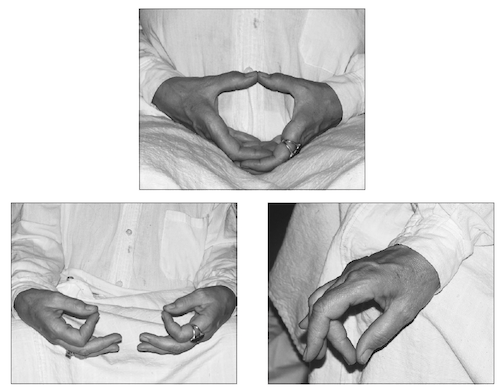
Concentrative, Meditation, Mindfulness, Spirit, Uncategorized
MUDRAS AND MOVING MUDRAS
This is small yet useful way to help maintain focus of your attention while you meditate. It can help you keep your mind from rambling around when that’s not what you want to do. It’s an alternative to the “visual splitting” described in another blog. Actually this is simpler and more basic.
A mudra is a hand position of a kind used by both Budhist and Hindu meditators. The position of palms together and fingers pointing upward used in Christian prayers and also those of many other spiritual traditions is a mudra. Its meaning is a communication with the divine (which might or might not actually happen, depending on your state of consciousness.) This prayer mudra is called the atmanjali. In some cultures it’s also used as a sign of respect or gratitude —especially Japan and India.
Another popular mudra is the jnana mudra that symbolizes opening the heart to the wisdom of heaven. You’ve probably seen a statue of the Buddha sitting cross-legged with his palms turned skyward on his legs and the thumb and index finger of each hand touching. Or you can use the thumb and middle finger.
If you’re in public and you want to meditate without looking obvious you can turn the jnana mudra upside down as shown in the third of the three pictures with this blog. Long ago I started sometimes doing that after I was using the jnana mudra while sitting against a pillar meditating as I waited for a train in a crowded railway station waiting room in which all the seats were gone. I didn’t want to move until my meditation was finished.Some people thought I was begging and dropped coins into my hand. After that I started turning the jnana mudra upside down in public. I call that the invisible mudra. All others can see is your knuckles.
There are many mudras. You can find entire books about them. These three are enough for me.
Maintaining a mudra can help keep a clear centered mental state. In the Zen tradition if your thumbs droops instead of keeping your mudra almost circular it’s a sure sign that your mind has wandered.
For me with my typically busy mind a mudra wasn’t enough. I could maintain one while my mind wandered. Eventually I realized that I could pair a slight movement of my mudra with my breathing. That is, move my thumb and finger apart slightly (or in the Zen mudra my two thumbs apart) as I breathed in and then let them touch again as I breathed out. And so on over and over.
What’s happening there? With more of my mind anchored in paying attention to my meditative practice, less of my attention is available to go wandering. It works for me.
But it might not work for you. Try it and see. If it does, great! If not, if you find the slight separation and touching in rhythm with your breathing distracting rather than helpful after you’ve tried it for a couple of weeks, you can use a mudra with no movement instead. I suggest at least that.
Unless you don’t need it at all. Some people (but not many) can fairly easily keep their mind focused in present awareness of just one thing, such as their breathing. Pure mindfulness.
If that’s not you, then a basic nonmoving mudra may serve you well. If you try that and your mind still jumps around a bit, then a moving mudra may be just right for you.
If even that isn’t enough — if you’re one of those people with a mind that tends to dance around everywhere (like me) then you can try using both a moving mudra and visual splitting together. Doing that is a complex enough task that it leaves less of your attention available to go wandering. It anchors more of it in the here-and-now. Or in closely focused contemplation, if that’s what you want to do.
(photo with this blog is from Matrix Meditations by Victor and Kooch N. Daniels, available as both an e-book and hardcopy.)
© 2021 by Victor Daniels.
You are welcome to share this with whomever you wish so long as no charge or profit is made from doing so. Inclusion in any electronic or hardcopy post or document for which a charge is made requires consent of the author.

Psychology, Spirit
“THE TRUTH WILL SET YOU FREE – BUT FIRST IT WILL PISS YOU OFF.” (full disclosure: I saw the line on a t-shirt.)
Imagine that you have a police detective in your mind who tools around in a patrol car, or rides through your neural circuits on a motorcycle, or even walks around inspecting your mental territory with a magnifying glass like Sherlock Holmes. Upon finding a thought or feeling that’s forbidden, the officer writes out a citation that says, “Forget it.”
Where does that inner surveillance of your beliefs, attitudes and actions come from? You may have learned as a child that if you revealed thoughts that were forbidden, it meant punishment or loss of love from the adults who cared for you. Or that you’d get ridiculed or beat up by the kids down the street, or by the school bully. So your inner police siren jolts your mind into thinking something different. If you’re like most people, you have a whole collection of such mental tactics.
So you make mistakes that cause you trouble. And if enough of the rest of us have ideas and feelings that similarly make us act in ways that harm ourselves or others, we can do major damage to our families, our communities, our country, and even the world.
All that’s part of what counseling, psychotherapy, and some spiritual practices are for. They’re to help people replace old ways of acting they formerly needed to protect themselves or others, but don’t any more.
Here’s a thumbnail summary of reasons we sometimes make avoidable (or even tragic) mistakes.
1. If we were punished in the past when we refused to act or feel as others wished, at some subconscious level we recall the old punishment, feel the old fears, and avoid thinking or acting that way now—even when its exactly what we need to do. A similar pattern can occur when we’re afraid we won’t get something we need or badly want.
2. We deny realities many others can see because of “everybody knows” attitudes held by people around us. These attitudes are passed along to us by others in our “reference group” – that is, everybody with whom we compare ourselves. Most of us want approval.
3. We want to feel like hotshots. We think that if we admit that someone else is right and we’re wrong we must look stupid. Actually, the opposite is usually true. Flexibility of mind leads us to be right more often than wrong.
4. We think that if we admit that we were wrong about something and change our mind about it, we’re defective. This is egocentrism that makes us dumb. When we’re willing to notice what’s actually going on now—inside us, outside us, or both–we become smarter. The effects are usually more positive than when we slide into self-deception.
In some ways we’ve all been brainwashed. The plutocrats and overlords of every culture and country spin myths that help them keep their special privileges. “Half a truth can be a great lie,” noted Benjamin Franklin. We can learn to see through such mental smokescreens.
Many of the lies we tell ourselves (our acts of self-deception) serve the useful end of helping us feel better. We protect or inflate our egos and assuage our insecurities by pretending to be more capable or knowledgeable than we are. We refuse to admit, for instance, that we might be or might have been wrong about something. As a result, often we end up super wrong.
But how, you might wonder, even if you’re sharp enough to notice that you’ve been snared by some dogmatic belief system, can you step outside it and think for yourself?
Truly wanting to do so is a good start. Developing the ability to hear what you’re inwardly telling yourself is a next step.
Of course we all have our pet peeves. One of mine is self-righteousness: “I’m good and righteous and
you’re bad and wrong and maybe even evil and controlled by Satanic forces.” A person who’s feeling or acting self-righteous fancies himself or herself better than others who think or act differently, or who look or sound different. When that includes you, you may not even notice it. You think you’re just in touch with reality. Blaming, finger-pointing, and even insults are often flaming arrows that show that we’re probably projecting—thinking we see in others the things we don’t want to recognize in ourselves.
It’s easier, writes James Hillman, “to discover yourself a victim than admit yourself a perpetrator.”13 After all, we want to think we’re good people who are doing the right things. Recognizing damage we’ve done, are doing, or are thinking of doing is an advanced stage in psycho-spiritual growth.
Can you be that conscious? Are you willing to work to develop your ability to see and hear your own projections? If so, welcome to a better life!
Psychology, Spirit
COMMUNICATION: SIMPLE RESPECT. This is the first new post about everyday communication. Most of these will not be big, deep comments, but small ones that can improve and brighten everyday dialogues.
In a drive-by-shooting someone in a car or on a cycle or scooter passes someone, fires a shot, and vanishes. The person who is shot has no chance to protect himself or herself or to retaliate.
One kind of comment has something in common with this. A person makes a mean, insulting or otherwise hurtful comment to another and then vanishes. Maybe in a car, a crowd, into an elevator or room as the door closes, or anywhere else where there is no chance for a reply. The remark may be right, wrong, or a complete misunderstanding, but the recipient has no chance to explain or correct it.
The recipient may feel feeling demeaned, angry, violent depressed or something else—usually negative. Occasionally he or she feels forgiveness or pity for the small mindedness of the person who made the remark and sped away, but injured feelings are more often the norm,
Why are verbal drive-by-shootings destructive? First, often they cause avoidable pain or suffering for the hearer. Often, of course, the “shooter” doesn’t care. Second, they often trigger a craving for revenge. “I’ll get that S.O.B. back!” If you’re that S.O.B., the reprisal just might come when you least want it. Passive-aggressive intentions to embarrass you terribly or stab you in the back are commonplace. Third, positive feelings that may have existed between the two of you are likely to be shredded or diminished. This can send a relationships downhill fast.
Sometimes such actions are unintentional, A person may not expect their remark to be hurtful. Or they may be in a big hurry to go and just not think to wait for the other’s reply. Such incidents can often be repaired by later conversation and / or apology. But until then at least one of the people is likely to feel bad.
Also, some people in some situations may just think “FY too” and forget it. Or may have enough self esteem that the comment just rolls off like water from a duck’s back.
But many people don’t. In the meantime, this communication tactic, habit, or error is best avoided. Leave space for a reply!
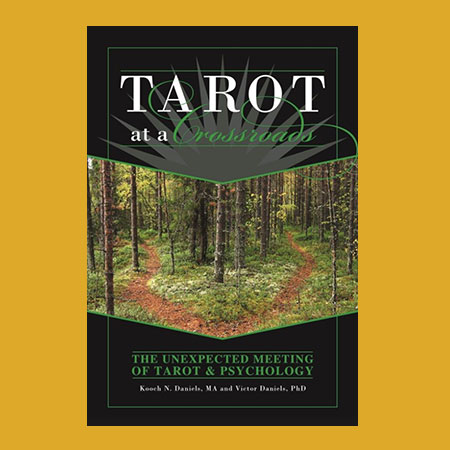
Psychology, Spirit, Tarot & Images
A UNIQUE NEW TAROT AND PSYCHOLOGY BOOK HIGHLIGHTS METHODS OF USING VISUAL IMAGERY TO STIMULATE HEALING IN READINGS, COUNSELING, AND PSYCHOTHERAPY
THIS UNPARALLELED RESOURCE CAN BENEFIT TAROT READERS, PSYCHOTHERAPISTS, COUNSELORS, ART THERAPISTS, LIFE COACHES, SOCIAL WORKERS AND OTHERS
.
IF YOU’RE A TAROT READER, you’ll find insights and understandings that are in no other work on the Tarot. The book addresses the relationship between reader and client. It shows how to uncover thoughts, feelings, and sensations that underlie first reactions to a card, It presents ways of working through both outer conflicts and inner dilemmas to help make your readings more effective. Using psychological knowledge it describes ways to read the cards as they uniquely apply to a given person, as well as how to help people create the future they want for themselves. You will also find a number of unique new spreads that can add additional dimensions and depth to your readings for both yourself and others.
IF YOU’RE A HUMAN SERVICES PROFESSIONAL, suddenly you’re no longer limited to words. Much of our thinking occurs as mental pictures and mind-movies. In our “representational” approach you don’t have to know traditional Tarot card interpretations. The meanings are mostly supplied by the clients, who select images to represent their concerns from a face-up deck. The book also details how to work with visual imagery of almost any kind, in addition to or as an alternative to Tarot cards. It describes how to use a collection of visual images as a substitute for psycho-dramatic enactment, empty chair dialogues, sand trays, or artistic media. It describes how to use identification, projective dialogues, and enactive movement with the images your clients select. Finally, it shows how to use images to work through issues or foster creativity in relationships with multiple others, such as family constellations or work groups. It also helps population like children, teenagers, and the very shy to open up and discuss their concerns.
For all readers, Tarot At A Crossroads tells how to do readings or use the cards for therapy in a group, and how to use them for meditation in inner work. Methods of using tarot imagery for couples as well as individuals are included. It integrates traditional tarot interpretations with psychological insights to create meaningful interpretations and useful directions for personal work. The book is useful whether you do readings for yourself, for friends, or professionally — or if you want to explore the value of using a symbolic language in your work. Perhaps you will even enjoy just browsing through the book and reflecting on its 208 wonderful color images and what they evoke in you.
The engaging style draws you right in. GET IT NOW at your favorite bookstore or click below on:
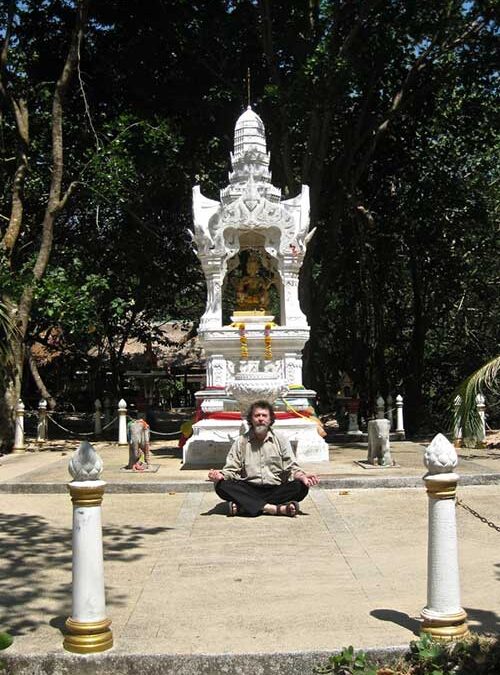
Meditation, Psychology, Spirit
TWO-MINUTE MEDITATION. (YES, REALLY!)
This is for you if you’ve heard that meditation can have positive effects but just haven’t brought yourself to spend the 15 or 20 minutes a day required for a minimal regular meditation session.
This mini-meditation is useful when you:
1. . . .feel stressed-out
2. . . .are emotionally upset and want to calm down. Any kind of emotional upset –sad, angry, jealous, aggressive, etc. — choose your state of mind and body.
3. . . .would like to feel just a little more centered and focused before you set out
on your day. . . or go into an important meeting . . . or would like to feel more
focused or present before -whatever.
4. . . . know it would be best to keep your mouth shut but have a hard time stopping yourself from saying something that will cause trouble for you or make someone feel bad.
5. . . . would like a tiny tast of meditation to see whether you’re willing to put a bit more time into it.
6. . . .are waiting for somebody or something and have nothing else to do
7. . . . feel bored but you forgot your smartphone or ipad or it has run out of juice
and you want something — anything– to do.
8. . . . “just feel like it — no special reason.”
Okay, let’s go. Just two minutes. Enjoy!
Whether you’re sitting or standing, begin by centering yourself as completely as you can in relation to gravity. Lean slightly forward, backward, left, and right, and find the place where if you were a pendulum you’d come to a stop, You can do that in about 20 seconds. Already you’ve begun your meditation!
Then inhale deeply through your nose and silently count “1” on your incoming breath as you inhale. Sense your breath coming in through your nose and going down into your lungs. At the same time, hold your hands so that the thumb and first or second finger of each hand are close together — just about an eighth of an inch apart.
Next exhale (preferably through your mouth) and to the best of your ability let everything that was in your mind “flow out” on your exhalation. As you do, continue to sense your breath, going out now, and at the same time scan your body for any muscle tension or tightness and let go of it as much as you can while you are exhaling. Also, as you exhale close that eighth of an inch gap between each of your thumbs and fingers so that each thumb and finger just touch. This is a “moving mudra.” You’ve now seriously begun your two minute medidtation.
Now, simply repeat what is described in the two paragraphs just above, but this time silently count “2” as you inhale. Do everything else just as above.
Then repeat what you just did for eight more breaths. On the third breath count “3” as you inhale, on the fourth breath count “4,” and so on up to 10. After the tenth breath you’re finished. Then look around, listen, and be as present as you can with your more relaxed body and your immediate surroundings and less caught up in your mind. Yep, you can do this in two minutes.
Of course, if you feel like it, you’re likely to deepen your meditation if you do another sequence of ten breaths, and as many more as you like until you’re ready to stop. But not more than ten. If at some point you want to get a little deeper into meditation, look at the other blog posts here. And if you’d like to get into it in a more deeply enriching way, you’ll find this book or e-book just plain amazing. It might even become your lifelong friend. (If you want to check out samples, go online to the address just below.
Learn more: Matrix Meditations

Meditation, Mindfulness, Psychology, Spirit
“Mindfulness” has become a catch-word in some circles in recent years. Some of those who use the term understand it and some don’t. It’s a Buddhist term that is differs very little from the Yogic term “witness consciousness.” Both involve noticing, moment-by-moment, what your mind is doing.
Many who try to meditate with witness consciousness or mindfulness get stuck because they have overlooked the previous step, concentration. Only when you have the ability to notice your mind in action and focus it where you want to does real mindfulness actually become possible. Its essence is the ability to, in a sense, “stand behind” your mind and notice what it is doing. Most of us most of the time are caught up in our thoughts that are darting here and there like clothes that are caught up inside a washing machine, going this way and that as the washer spins or agitates them. In other words, we are identified with our thoughts. As a result, we have little choice about what we think and feel. Our thoughts run in old patterns, like an old fashioned record player’s needle stuck in the same old groove, replaying the same thought pattern over and over again. A problem with this is that we see and think only what we already think we know. When new information comes along, we tend to reject it, in order to be able to think that we were “right” all along. Sometimes it’s an ego thing to protect our self-esteem. Other times it’s just easier for our neural impulses to follow their usual paths (see the blog on Tolman’s cognitive maps.)
By contrast, with witness consciousness or mindfulness, at each moment we notice what our mind is doing (whether it is focused on a thought, feeling, physical sensation, or event outside ourselves, which includes other peoples’ actions, opinions, and attitudes). In a sense, I detail one small part of my mind to watch / listen to / witness / be mindful of / what the rest is doing. (This is called “two-pointed attention” in the Zen tradition.) When I am actually aware of what my mind is doing, I can choose whether to let it keep on doing that in the same way, or examine it and what lies beneath it more deeply, or do something else. This is useful both when I am with myself and in conversations with others. The reason people often sit in a particular position without moving for a period of time while meditating is because that makes it easier to watch the mind. Watching it (or if you prefer, listening to it) opens many windows on the world that I didn’t know were there. It makes it possible to move from being a denier (of everything I didn’t already believe) to being an inquirer (who’s interested in finding out what’s actually going on, inside or outside himself or herself.
So just sit. Balance, then breathe, then release unneeded tension. Then count your breaths or recite your mantra until you feel as centered and focused as you sense that you’re likely to get right then. Then do nothing but observe and listen. You’ll probably want something like a flower or candle flame six feet or more in front of you to bring your attention back to when it drifts off. Notice what you think, feel, and sense. When you notice your body drooping instead of sitting straight up, it’s a signal that you’re no longer witnessing or being mindful. Regain your centered sitting position and bring your gaze back to the physical object in front of you (unless you’re using an eyes-closed meditative practice.) If you do this for more than ten or fifteen minutes, your body may start to feel painful and uncomfortable. That’s good. It makes it hard to think about anything else. Just notice the pain — where and how you experience it. Continue in this way until the end of your session, “just noticing” everything that occurs inside you or outside you. Then again count ten breaths as you did during the starting sequence, moving your eyes to a different object with each breath, as you make the transition back to everyday consciousness.
Once you become quite skilled at this, you may be able to do it in the midst of some of your everyday activities. Also, when you can do it fairly reliably, you will be ready to put your concentration and mindfulness or witness consciousness together and move into a contemplative meditation. (If you try contemplative meditation without having first developed these abilities, your mind is likely to use all kinds of clever avoidance tactics when you feel uncomfortable. Concentration and mindfulness give you a method to notice and release that avoidance.)
And remember two points. First, often it’s at least as more important to notice your emotions and physical sensations as your thoughts. Second, a runner in training will have days when everything seems easy and to go well and days when everything seems difficult. Meditation is the same way. Whether a session seems “good” or “bad” is not important. Each moment of each session is just how it is. It’s all training. It’s all useful.
For much greater depth and detail about all this, our book Matrix Meditations
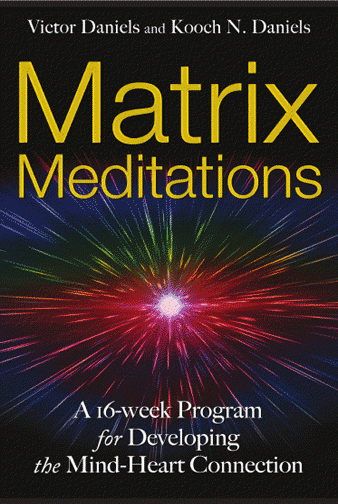
Matrix Meditations










